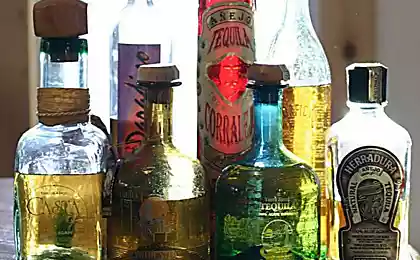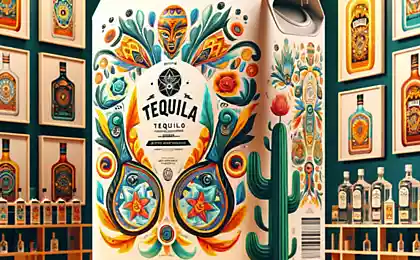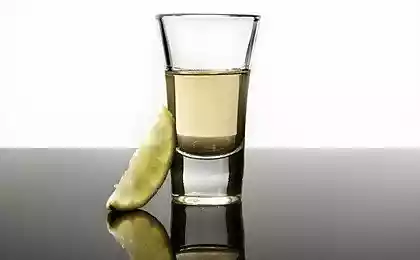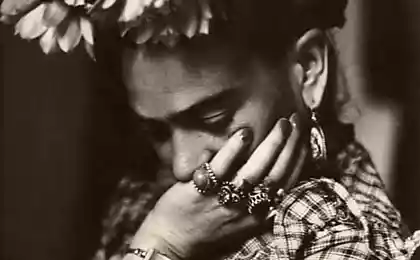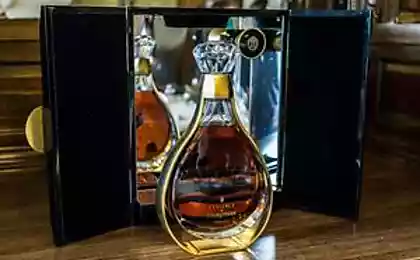1211
How to make tequila
Today many states on the planet have their traditional drink, forever associated with the spirit of the country. France is proud of its famous brandy, Cuba - rum, Russia - vodka and drink produced in Mexico, banned the production of absolutely all the other countries of the world - Mexican tequila.
24 photos via mikeseryakov
1. I think many of you know that this "Mexican vodka", and tried the cheapest types of this beverage in bars with lemon and salt. In fact, this tequila is drunk as a brandy, feeling the flavor and no drinking and no biting. Tequila the drink appeared in the 17th century, and its name - the name of the eponymous town in the Mexican state of Jalisco. It is said that verbatim from some dialect it means "place of taxation".
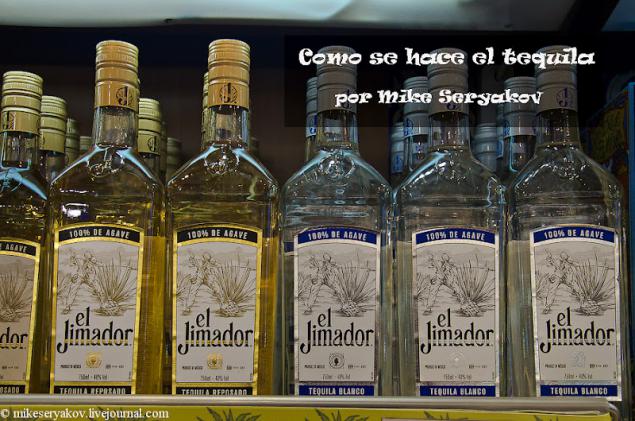
2. Tequila is made from agave, a great number of species that grow on the territory of modern Mexico. There's even a special profession himador - a man who directly produces and processes the agave. But tequila is not the Mayans invented - the indigenous people of southern Mexico, and the Spanish conquistadors. The Indians drank a fermented agave juice - pulque, and only the Spaniards brought to the American continent processing technology of alcohol. It looks like the blue agave plant from which tequila is done.
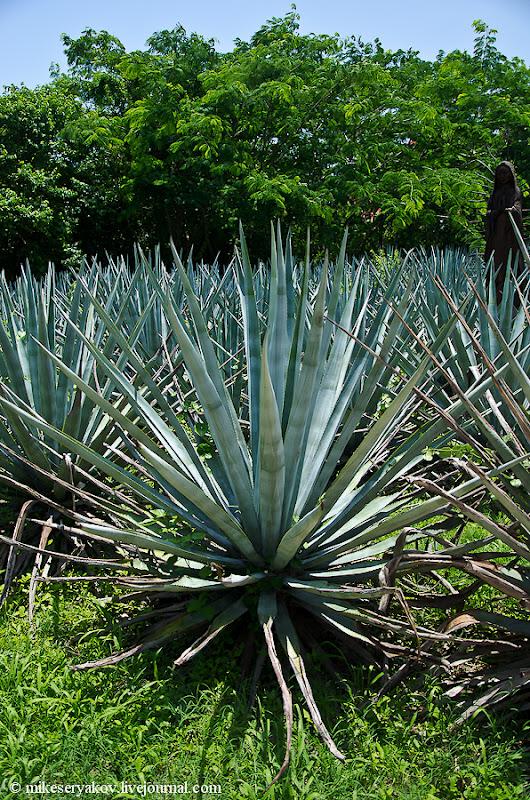
3. According to some sources, the plant needs to grow from 7 to 10 years before it can be used for the production of tequila, and on the other only after 12.
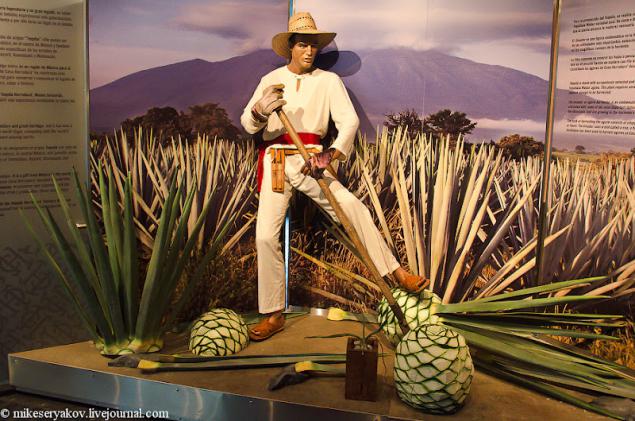
4. himadory in Mexico take a physically strong men, because they are all year round under the blazing sun must chop the leaves of agave, which give the bitterness with a special shovel, called koa and extract a core of blue agave, called Pigna (Spanish - pineapple).
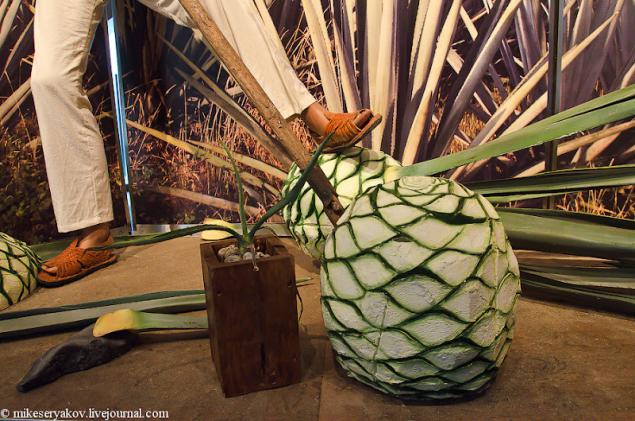
5.
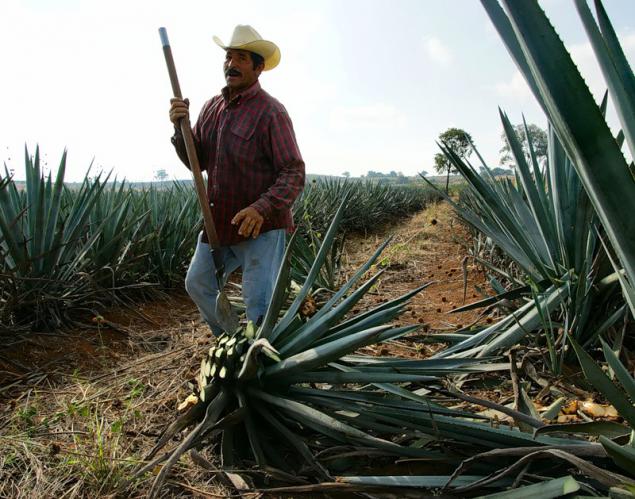
6.
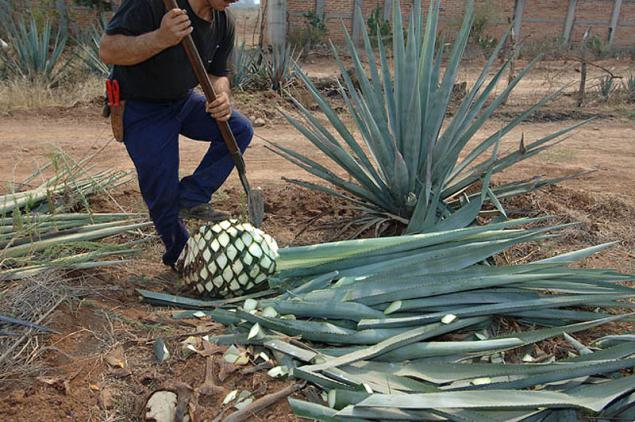
7. Himadory collect pini, then to bake them in the oven. 1 bottle of tequila turns of about 9 kilograms pini. After the heat treatment, "pineapples" are softer and more of them are starting to squeeze the juice. Treatment lasts 46 hours, 26 hours, directly to the furnaces 20 and still allowed to cool.
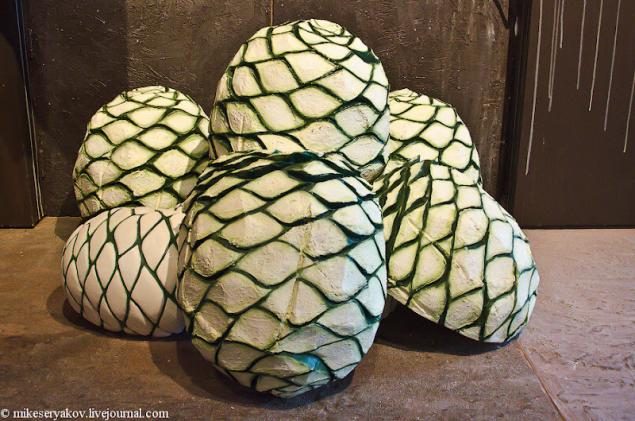
8. If the furnace pieces pini chop finely, then it will look like this.
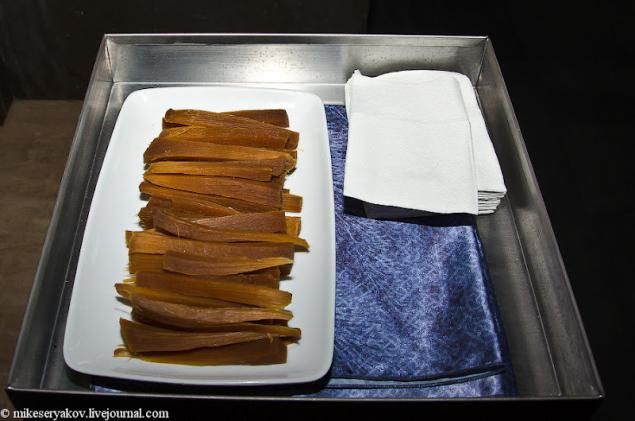
9. If, after the furnace pieces pini chop finely, then it will look like this.
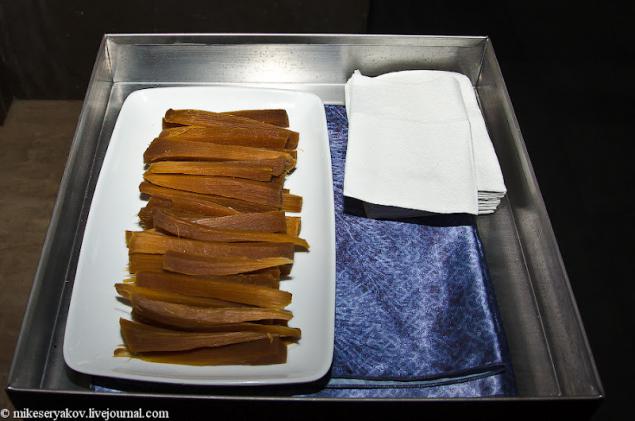
10. Baked pini cut, put on a special ribbon, and then squeeze out the juice.

11. In ancient times, the juice squeezed out like this simple device. We put on a "dish" baked pini and horse or mule went around and squeezed the juice of the agave.

12. The agave juice is added after the natural yeast and fruit trees, to drink ferment. Fermentation lasts for 5 days, after which it turns the fermented juice of the agave strength of 5%. That is pulque - the only alcoholic beverage indigenous people of Mexico. Then the juice is subjected to a primary distillation, for this it is poured into a special machine called alambikes or alambik, "translating the Spanish version in the Russian»
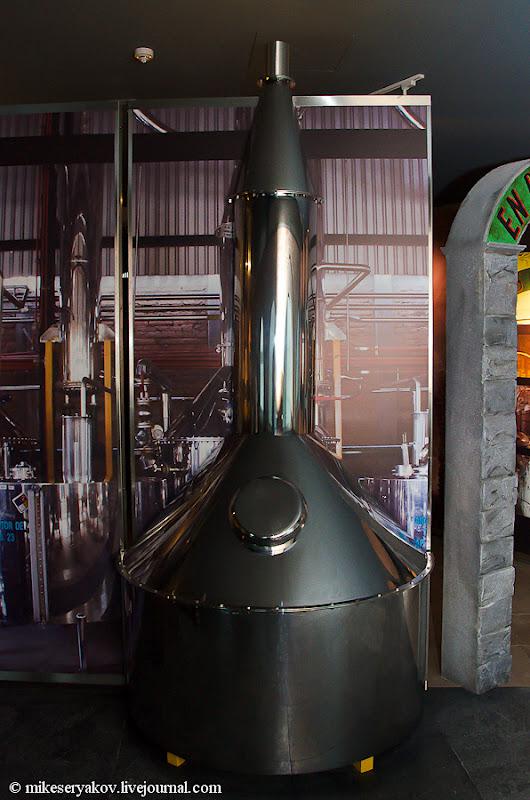
13. Before alambiki were made of copper, and looked like that.
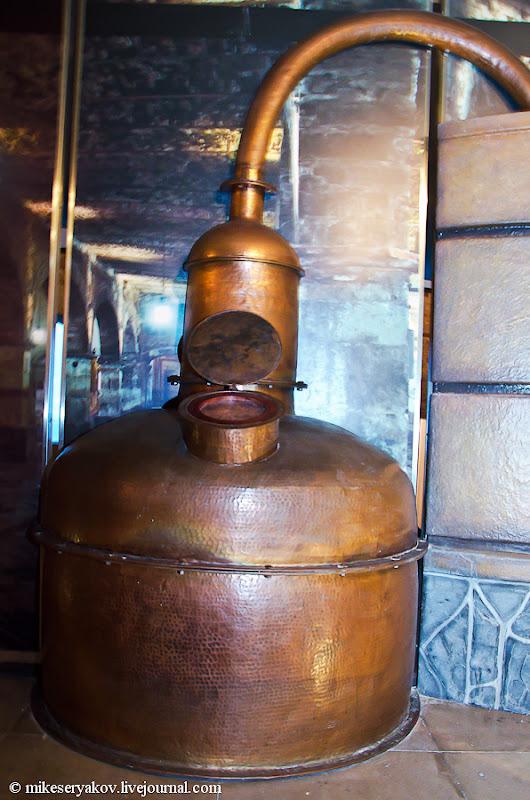
14. In this machine, the juice is heated to a temperature of - 80 degrees Celsius. The upper part of the machine is called the head - it is separated ethanol and methanol. The middle part is called the heart (El Corazon) - famous Spanish word known, probably, all, and the lower part is called the tail. In the tail of accumulated filth. Distillation is always double. First lasts 3 hours, and the second - 6 hours. After the second distillation of all tequila - silver (blanca) - although it is literally translated as white, the name is derived from the color of the drink - it is transparent. Degrees beverage obtained about 55%, then add the water, thereby reducing the strength of the drink to give pleasing 38-40 degrees. Classically tequila can be divided into 2 types: 100% - agave and tequila - mixed doubles. Mixto means that only 51% tequila agave, and the rest - auxiliary substances, such as sugar cane or corn syrup. All Mexicans with whom I spoke, as in Mexico, Tequila Mixto do not recognize at all. According to them, on the bottle should be clearly written 100% agave, or they drink this drink will not. While most common in Russia, tequila, which I had seen before «Olmeca" and «Sauza", are Mixto, and my friends are not recognized strongly tequila. Over a rare brand of «Jose Cuervo" - is also a tequila mixed doubles. Although it is one of the oldest brands of tequila, its founder Jose Maria Cuervo got the license to produce tequila, already in 1795.
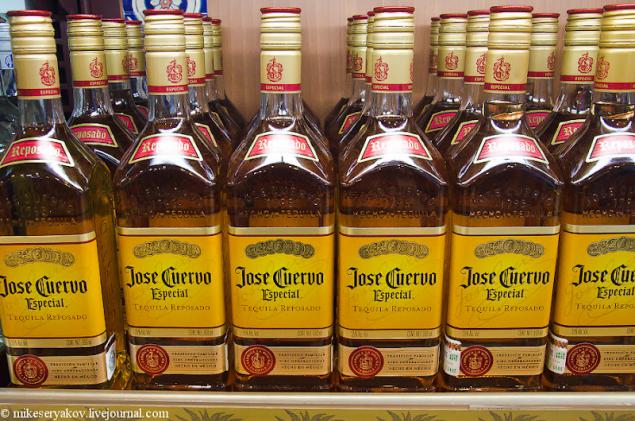
15. Some of the resulting after the second distillation of the drink is bottled and labeled as the «Tequila blanco", and subjected some of the aging in oak barrels from white to get more expensive and aged varieties.
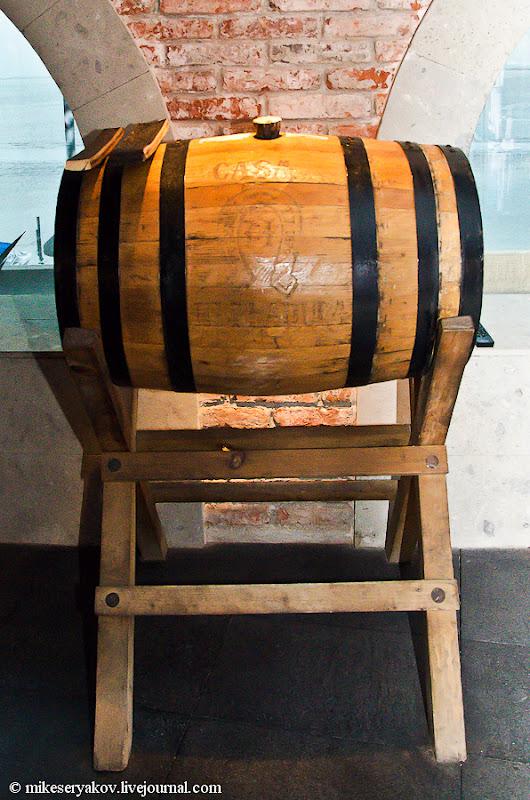
16. Each barrel costs about 200,000 Mexican pesos, or roughly the equivalent of 15,000 US dollars.
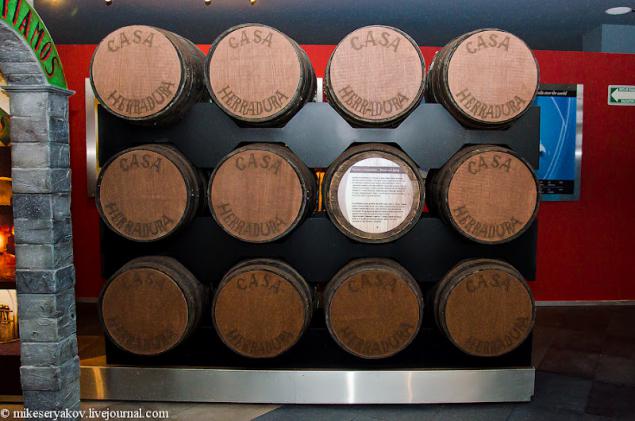
17. The barrel is fired, and the tree looks like from the inside.
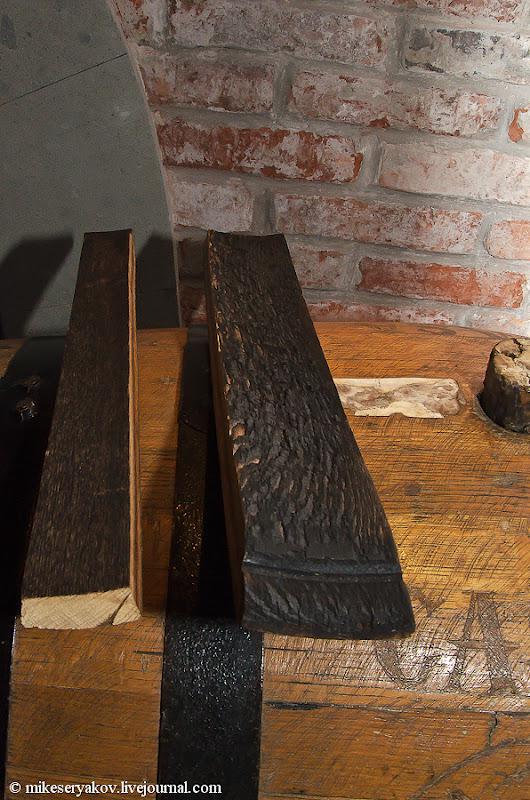
18. Each barrel 5 can be used only once, since after each use "burnt wood" I scraped off and fired again for the next time. This white oak barrels seasoned tequila and give a yellowish tint.
Now we can talk about a complete classification of tequila drink:
1). Blanca, usually not sustained, the color of the transparent or plata - cask up to 60 days and has a barely visible yellow tint.
2). Mixto Gold - almost the same drink as blanca, but only with the addition of additives, which give color.
3). Reposado (rested) - tequila, aged in oak barrels from 2 to 11 months.
4). Anejo (old) - Excerpt from 1 to 3 years.
5). Extra anejo - excerpt from 3 years or more.
The last I would compare with French cognac aging "XO".

19. The most-selling tequila in Mexico two years ago, was the brand of tequila «Herradura Reposado"
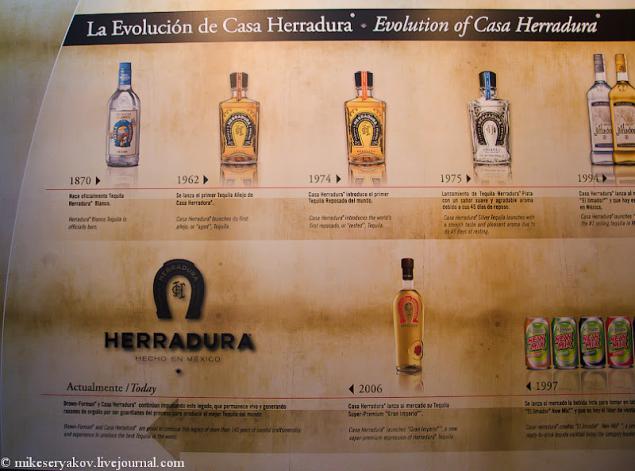
20. Drink tequila is usually tall, narrow glasses, called «caballitos", but tequila taste of them is impossible, since you can not feel the flavor. Therefore, tasting and enjoying tequila glasses are used, like cognac.
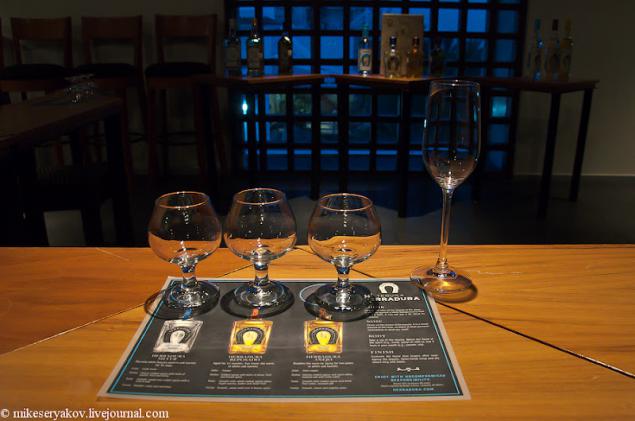
21. It is believed that if a good tequila poured over hands and then rub them, then a few seconds later the smell of alcohol will disappear and there will be only the smell of the agave. If you form a good tequila, it must be absolutely clear and transparent without inclusions of black spots, if it is still present, it indicates a bad distillation. Generally it is Blanco tequila and drink with lime and salt, added to cocktails like "Tequila Boom" or "Tequila Sunrise," a well seasoned varieties recommended to drink only pure, to be able to enjoy the noble taste of the drink. More Mexicans say they drink tequila blanco before a meal, during the meal Reposado and Anejo after eating.

22. Speaking of the marks of this drink, I said that the most popular in Mexico are brands such as «Don Julio", "Herradura" (Spanish for "Horseshoe") and "1800 anos". All these drinks are 100% natural made from blue agave.

23.
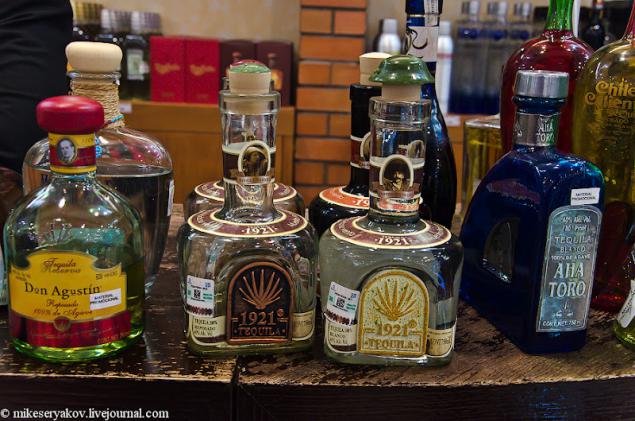
24.
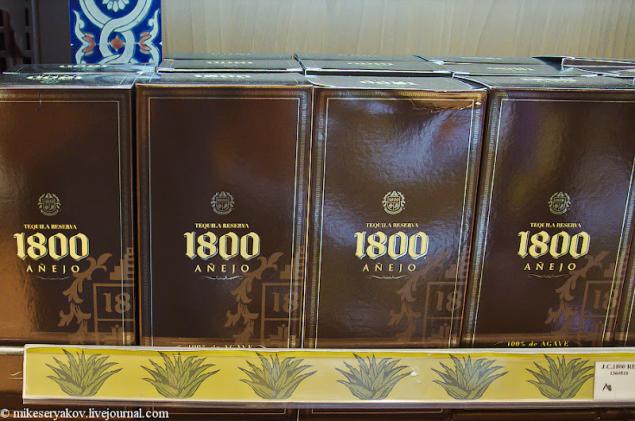
Source:
24 photos via mikeseryakov
1. I think many of you know that this "Mexican vodka", and tried the cheapest types of this beverage in bars with lemon and salt. In fact, this tequila is drunk as a brandy, feeling the flavor and no drinking and no biting. Tequila the drink appeared in the 17th century, and its name - the name of the eponymous town in the Mexican state of Jalisco. It is said that verbatim from some dialect it means "place of taxation".

2. Tequila is made from agave, a great number of species that grow on the territory of modern Mexico. There's even a special profession himador - a man who directly produces and processes the agave. But tequila is not the Mayans invented - the indigenous people of southern Mexico, and the Spanish conquistadors. The Indians drank a fermented agave juice - pulque, and only the Spaniards brought to the American continent processing technology of alcohol. It looks like the blue agave plant from which tequila is done.

3. According to some sources, the plant needs to grow from 7 to 10 years before it can be used for the production of tequila, and on the other only after 12.

4. himadory in Mexico take a physically strong men, because they are all year round under the blazing sun must chop the leaves of agave, which give the bitterness with a special shovel, called koa and extract a core of blue agave, called Pigna (Spanish - pineapple).

5.

6.

7. Himadory collect pini, then to bake them in the oven. 1 bottle of tequila turns of about 9 kilograms pini. After the heat treatment, "pineapples" are softer and more of them are starting to squeeze the juice. Treatment lasts 46 hours, 26 hours, directly to the furnaces 20 and still allowed to cool.

8. If the furnace pieces pini chop finely, then it will look like this.

9. If, after the furnace pieces pini chop finely, then it will look like this.

10. Baked pini cut, put on a special ribbon, and then squeeze out the juice.

11. In ancient times, the juice squeezed out like this simple device. We put on a "dish" baked pini and horse or mule went around and squeezed the juice of the agave.

12. The agave juice is added after the natural yeast and fruit trees, to drink ferment. Fermentation lasts for 5 days, after which it turns the fermented juice of the agave strength of 5%. That is pulque - the only alcoholic beverage indigenous people of Mexico. Then the juice is subjected to a primary distillation, for this it is poured into a special machine called alambikes or alambik, "translating the Spanish version in the Russian»

13. Before alambiki were made of copper, and looked like that.

14. In this machine, the juice is heated to a temperature of - 80 degrees Celsius. The upper part of the machine is called the head - it is separated ethanol and methanol. The middle part is called the heart (El Corazon) - famous Spanish word known, probably, all, and the lower part is called the tail. In the tail of accumulated filth. Distillation is always double. First lasts 3 hours, and the second - 6 hours. After the second distillation of all tequila - silver (blanca) - although it is literally translated as white, the name is derived from the color of the drink - it is transparent. Degrees beverage obtained about 55%, then add the water, thereby reducing the strength of the drink to give pleasing 38-40 degrees. Classically tequila can be divided into 2 types: 100% - agave and tequila - mixed doubles. Mixto means that only 51% tequila agave, and the rest - auxiliary substances, such as sugar cane or corn syrup. All Mexicans with whom I spoke, as in Mexico, Tequila Mixto do not recognize at all. According to them, on the bottle should be clearly written 100% agave, or they drink this drink will not. While most common in Russia, tequila, which I had seen before «Olmeca" and «Sauza", are Mixto, and my friends are not recognized strongly tequila. Over a rare brand of «Jose Cuervo" - is also a tequila mixed doubles. Although it is one of the oldest brands of tequila, its founder Jose Maria Cuervo got the license to produce tequila, already in 1795.

15. Some of the resulting after the second distillation of the drink is bottled and labeled as the «Tequila blanco", and subjected some of the aging in oak barrels from white to get more expensive and aged varieties.

16. Each barrel costs about 200,000 Mexican pesos, or roughly the equivalent of 15,000 US dollars.

17. The barrel is fired, and the tree looks like from the inside.

18. Each barrel 5 can be used only once, since after each use "burnt wood" I scraped off and fired again for the next time. This white oak barrels seasoned tequila and give a yellowish tint.
Now we can talk about a complete classification of tequila drink:
1). Blanca, usually not sustained, the color of the transparent or plata - cask up to 60 days and has a barely visible yellow tint.
2). Mixto Gold - almost the same drink as blanca, but only with the addition of additives, which give color.
3). Reposado (rested) - tequila, aged in oak barrels from 2 to 11 months.
4). Anejo (old) - Excerpt from 1 to 3 years.
5). Extra anejo - excerpt from 3 years or more.
The last I would compare with French cognac aging "XO".

19. The most-selling tequila in Mexico two years ago, was the brand of tequila «Herradura Reposado"

20. Drink tequila is usually tall, narrow glasses, called «caballitos", but tequila taste of them is impossible, since you can not feel the flavor. Therefore, tasting and enjoying tequila glasses are used, like cognac.

21. It is believed that if a good tequila poured over hands and then rub them, then a few seconds later the smell of alcohol will disappear and there will be only the smell of the agave. If you form a good tequila, it must be absolutely clear and transparent without inclusions of black spots, if it is still present, it indicates a bad distillation. Generally it is Blanco tequila and drink with lime and salt, added to cocktails like "Tequila Boom" or "Tequila Sunrise," a well seasoned varieties recommended to drink only pure, to be able to enjoy the noble taste of the drink. More Mexicans say they drink tequila blanco before a meal, during the meal Reposado and Anejo after eating.

22. Speaking of the marks of this drink, I said that the most popular in Mexico are brands such as «Don Julio", "Herradura" (Spanish for "Horseshoe") and "1800 anos". All these drinks are 100% natural made from blue agave.

23.

24.

Source:
